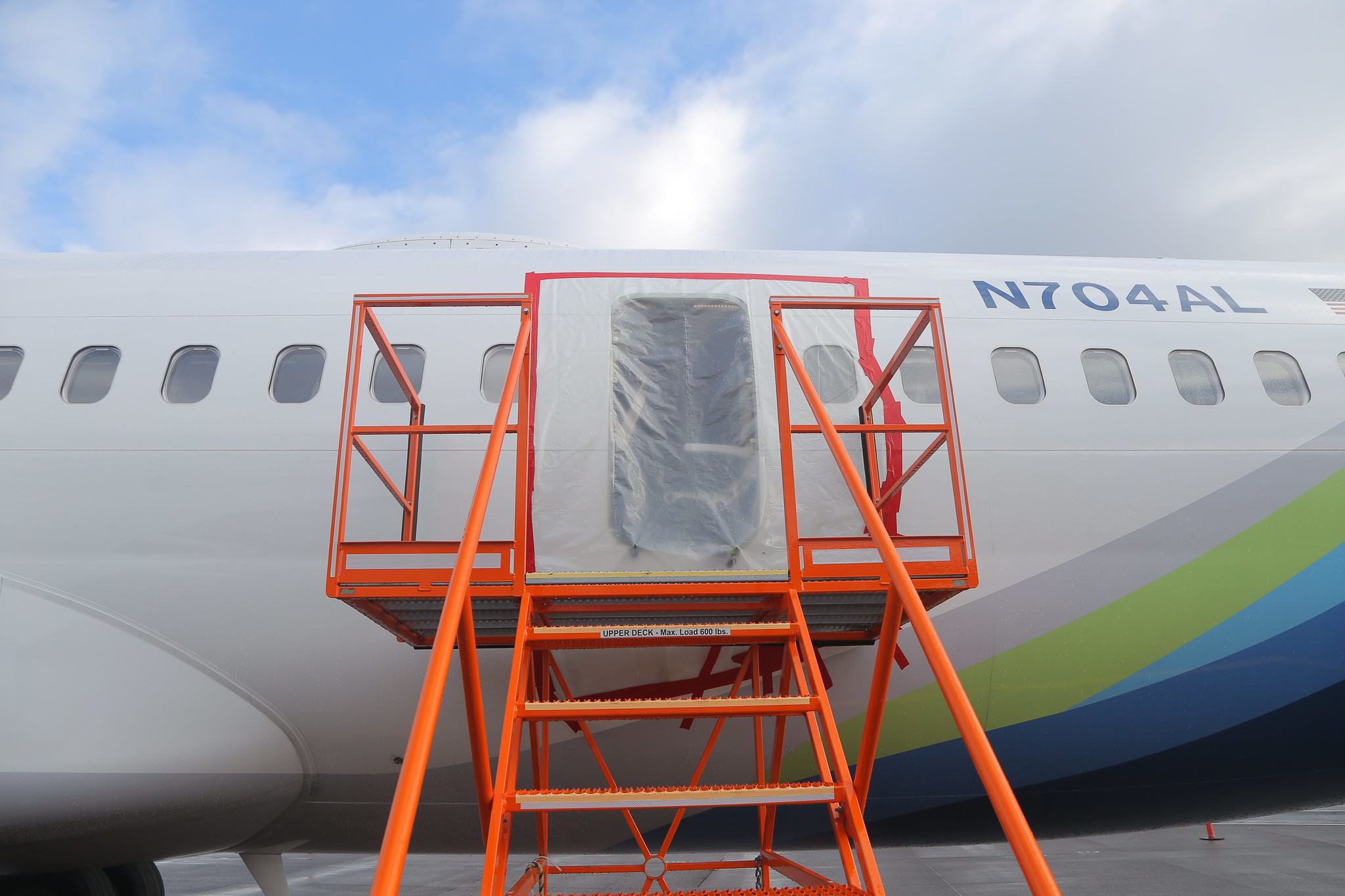Skift Take
The U.S. planemaker said it can’t issue 2024 financial targets as it still reels from the Alaska blowout.
While the Boeing 737 Max 9 is back in service, the fallout for the U.S. planemaker is far from over.
Boeing CEO Dave Calhoun said the company is determined to earn trust back after the Alaska Airlines blowout incident in a call with analysts on Wednesday.
“We will earn trust back through demonstrated action and a commitment to total transparency,” he said.
Shortly before the call, Calhoun told employees in a memo that Boeing is fully focused on the Alaska incident and strengthening its quality control.
“We have much to prove to earn our stakeholders’ confidence,” Calhoun said in the memo. “There is no message or slogan to do that. It will take transparency and demonstrated action — that starts with each of us along with a commitment to listening to each other and speaking up.”
No Financial Guidance This Year
Boeing didn’t issue any financial targets for 2024, with Calhoun saying the company needs to “focus on every next airplane.” It is unclear how big of a financial blow Boeing will take for the Max 9 fallout.
“Now is not the time for that. We won’t predict timing,” the Boeing CEO said. “We won’t get ahead of our regulator. We will go slow to go fast.”
After a section of an Alaska jet suddenly fell off mid-flight, Boeing has come under fire for its production and quality control processes regarding the beleaguered 737 Max family.
The model has a history of issues, including two fatal crashes with the Max 8 that led the Federal Aviation Administration to ground the aircraft for nearly two years.
The National Transportation Safety Board is investigating the Alaska blowout and is expected to release a preliminary report soon. Calhoun said he wouldn’t speculate on what could have caused the incident, but added that Boeing takes full responsibility.
“We caused the problem, and we understand that,” Calhoun said.
Fallout Hampers Max 7 and Max 10 Certification
Calhoun said Boeing is currently manufacturing 38 737 Maxes a month and plans to maintain that number after the FAA said it would not grant any production expansion of the model in order to further inspect the planemaker’s production lines.
Putting the brakes on growth makes it unclear when the Max 7 and Max 10 — the other two variants awaiting FAA certification — can enter service. Boeing recently withdrew its request for a safety exemption for the Max 7, which will most likely further delay deliveries of the aircraft.
Chief executives at United Airlines and Southwest Airlines said they are already not including the two variants in their short-term fleet plans.
“We will remain at that rate until the FAA and Boeing is satisfied with our quality and manufacturing process,” Calhoun said. “This increased scrutiny, whether it comes from us, from our regulator or third parties, will make us better.”
Going forward, Calhoun said Boeing plans to apply the NTSB findings to its supply chains and ensure there are “inspections at every turn.”
“We’re going to run that play as hard as we can, and we’re going to take the time to do it,” he said, “and the FAA — I’m sort of glad they called out a pause because that’s a good excuse to just take our time to do it right.”
For the fourth-quarter, Boeing said it delivered 157 commercial airplanes and had 611 net orders. The planemaker reported a free cash flow of $2.95 billion during the last three months of the year, and revenue grew 10% year-over-year to around $22 billion.
The Daily Newsletter
Our daily coverage of the global travel industry. Written by editors and analysts from across Skift’s brands.
Have a confidential tip for Skift? Get in touch
Tags: alaska airlines, Boeing, boeing 737 max 9, united airlines
